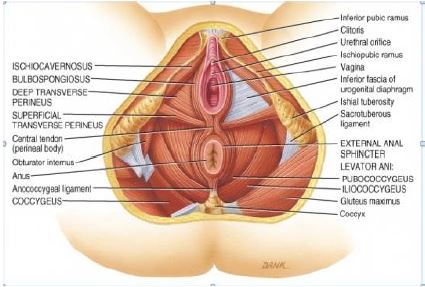matterlogoboss
Manual Muscle Testing Of Diaphragm
The diaphragm is a muscle that separates the chest from the abdomen and plays a very important role in breathing. When the diaphragm contacts (either automatically or through voluntary effort), air is drawn into the lungs, and when it relaxes, air is expelled.

In addition to its role in respiration, it is involved in coughing, vomiting, and even in defecation and childbirth. Medical conditions involving the diaphragm can range from minor concerns, such as hiccups, to Hiatal hernias, to paralysis (partial or total) caused by a number of underlying problems. Let's look at the structure and function of the diaphragm in greater detail, followed by the most important conditions affecting this structure. The diaphragm can be seen as being divided into two halves, or “Hemi-diaphragms.” (Hemi is a word that means half.) Each side of the diaphragm is supplied by a nerve (the left phrenic nerve and the right phrenic nerve) which control the muscle. The begin in the (nerves exiting the spinal cord in the neck) which carries nerves that begin in the C3 to C5 nerve roots (nerves arising near the neck by the 3 rd through 5 th cervical vertebrae). Conditions that affect these nerves anywhere along their course, from the vertebrae in the neck to where they insert in the diaphragm, can result in paralysis of the muscle. When the in the region through which the esophagus passes through the diaphragm, this is called a.
A hiatal hernia allows the lower esophagus and sometimes the stomach to pass from the abdominal cavity into the chest cavity. This, in turn, can result in leading to heartburn and indigestion. There are a number of conditions that can result in weakness of the diaphragm and, including increased pressure in the abdomen (from obesity or pregnancy), or straining (such as with heavy lifting, coughing, or having a bowel movement). Smoking increases the risk, as do some genetic conditions such as. From compression due to a tumor pressing on the phrenic nerve in the chest (such as with lung cancer) or near the cervical spine or brainstem. From damage to the phrenic nerve during surgery, such as during coronary artery bypass surgery, esophageal surgery, and others. From trauma to the chest cavity or anywhere along the distribution of the nerve.
Manual Muscle Testing Of Diaphragm Pain
From neurological conditions such as, and. Infections: Viral infections such as HIV, West Nile, and much more commonly in the past, polio, as well as bacterial infections such as Lyme disease.